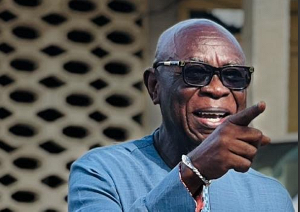THE GONJA
To the south-west of Mamprugu, Dagbon, and Nanum emerged the kingdom of Gonja. Available historical evidence suggests that Gonja was founded by Mande warriors and traders from Mali led by Wadh Naba or Nabaga; in the second half of the sixteenth century. They were attracted by the southern trade which had developed in the area between the Black and White Volta. Nabaga was believed to have been sent on an errand by the Mande Chief to find out why there was a fall in the supply (export) of gold to Mali. As obstinate, stubborn and rebellious as Nabaga appeared to be, he failed to carry out the orders of the Chief and rather set up a military base at Yagbum around AD 1554. With help from Dyula Muslims in Begho, Nabaga launched an army of Ngbanya horsemen against the indigenes. He defeated, for example, the Guan-speaking inhabitants on whom he imposed Gonja authority.
My own Great Bono lineage which was considered a threat to the existence of Gonja in the area fell prey to and was defeated in 1595. Between 1623 and 1666, a Gonja King named Ndewura Jakpa or Lanta led an invasion against Dagomba. He carried out further conquest taking the important salt-producing centre of Daboya from the Dagomba. Jakpa also defeated other states in a number of major engagements and founded several towns and villages including the important market centre of Salaga.
Social Organization.
The Northern people of Gonja described in the above historical account have three main social groups. They are the ruling aristocracy, the Muslim community and the majority commoners who follow traditional beliefs. Though they all enjoy some level of prestige, ultimate social influence was in the hands of the aristocratic class.
Inheritance is paternal and the family system is the extended type which includes brothers, sisters, mothers, fathers etc. The people are mostly polygamous and men are allowed to go in for many wives so long as their financial stand was good enough to maintain the wives and children. With the coming of Islam, many people adopted that religion with the observance of the five pillars of Islam. Many others have maintained their worship of local gods and the veneration of ancestors.
Political Organization
The political system of the people of northern savanna zone has an interesting blend. Whereas the descendants of the Gonja invaders occupy the skins as the political heads (eg. Nayiri among the Mamprusi, Ya Na among the Dagomba), the original inhabitants retain some influence through the Tendana - owners of the land, in the spiritual affairs. The Tendana has charge of the state cult and also ceremonially enskins the Chiefs. The political head of the state is the Paramount Chief-Nayiri among Mamprusi, Ya Na among the Dagombas. He wields executive and judicial powers and is assisted in the administration of the state by the Council of State Elders which meets periodically to deliberate on issues of great importance. Next are the sub-Chiefs who are believed to be the descendants of the founding fathers. They are in charge of the administration of the provinces and are often consulted on important issues. To ensure effective governance, the Mole-Dagbani states were divided into well defined units or districts. With the introduction of Islam, the royal dynasties were converted and Islamic political positions such as Qadi - magistrate, and Iman - spiritual head, were incorporated into the political structure. To ensure social justice, the sub-Chiefs exercise judicial powers in their provinces. However, the Ya Na’s court has the power to hear appeals from the lower courts i.e. the courts of the sub-Chiefs.
Chris Gyamfi Boateng, MS. Info
Opinions of Monday, 3 September 2012
Columnist: Boateng, Chris Gyamfi


















